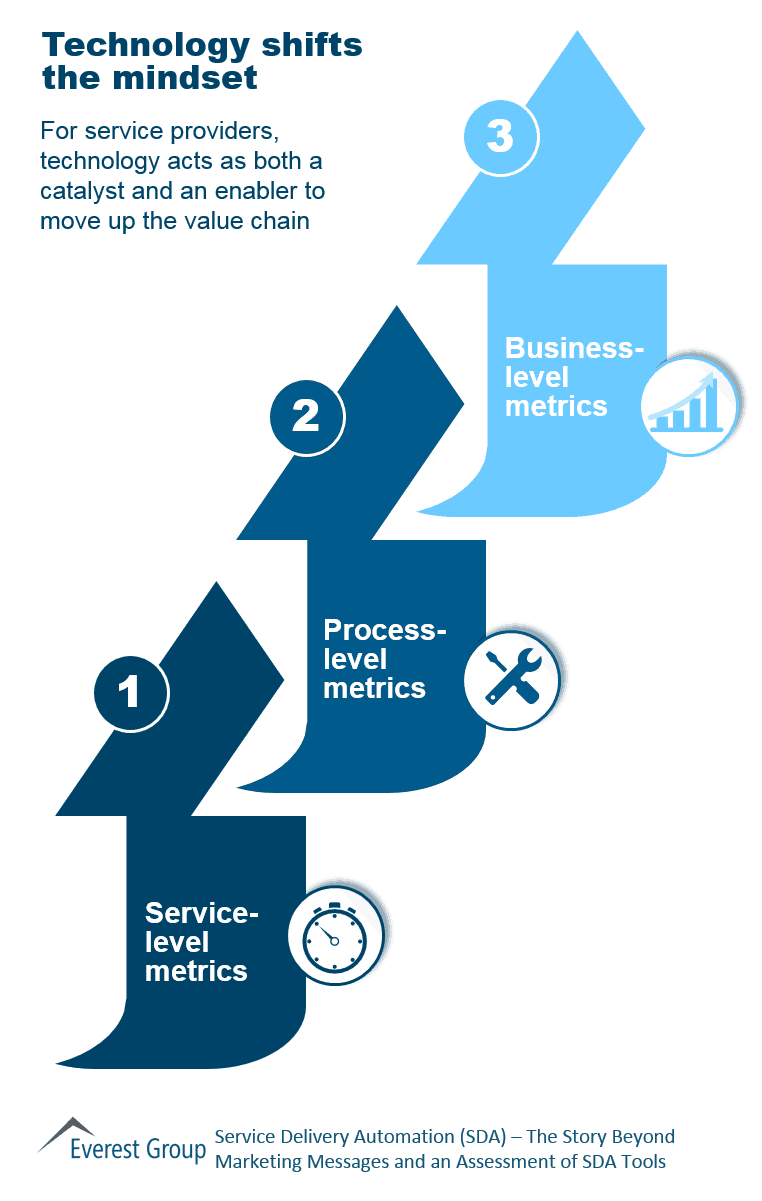Blog
The Force is Strong with Technology in BPS! | Sherpas in Blue Shirts

I rose grinning like an idiot from my seat in the cinema. The heady mix of nostalgia and excitement in my heart and the thundering applause from the audience on their feet gave no room for doubt that the Force had well and truly Awakened. “Star Wars: The Force Awakens” was phenomenal. I loved seeing all the old faces, and loved even more watching the new ones. But on my way back home, despite trying hard to silence it, a nagging voice whispered – wasn’t this by-and-large more of the same from the Star Wars franchise?
Likewise, when looking at the technology landscape in Business Process Services (BPS), one might be tempted to let this voice have its day and think, weren’t these technologies and strategies almost the same as those talked of a year or two ago? On deeper analysis, the truth is far from it, for both The Force Awakens and technology in BPS.
Star Wars – More of the Same?
The Star Wars movie definitely has many familiar tropes – a commoner recognizing her true potential and rising up to it, a person caught up in the struggle between his inherent goodness and the tempting dark-side, a predictably successful attack by the good side on a powerful, but vulnerable, weapon, and so on. However, these serve as tools to initiate the uninitiated, and to excite the nostalgic. What made the movie strike gold at the box-office were the new delights – a cast that broke gender and racial stereotypes, characters shrouded in mystery, and an effective handover from the old guard to very promising young talents. The latter has sprung up real possibilities to take the plot in drastically innovative directions, now that the fan base has been re-established strongly.
Technology in BPS – More of the Same?
Similarly, technology in BPS continues to be dominated by the traditional tools – workflow solutions, reporting solutions, OCRs, etc. And technology strategies are never complete without a mention of automation. Do these technologies still define the battle, and are these strategies merely buzzwords?
The answer is an emphatic no! Technologies such as the ones above are surely important, but as table stakes and as tools without which landing a deal is well-nigh impossible. And automation, especially Service Delivery Automation (SDA), has undeniably transcended the domain of what-ifs. Along with technological options such as Business Process as a Service (BPaaS) and predictive and prescriptive analytics, SDA now serves as the differentiating factor – one for which buyers are willing to pay a premium. A BPS strategy focused on strong integration of such technology with domain knowledge has become imperative rather than good-to-have.
Such an enhanced role of technology will have far-reaching impacts on both service providers and buyers in the near-term. Let’s look at four big ones, specific to service providers – resurgence of onshore delivery, expansion of delivery scope, distortion of talent pyramid and shift in strategic mindset.
Resurgence of onshore delivery
The engine of BPS has long used labor arbitrage as its fuel. But technology has now disrupted this engine. Robots are replacing, and will continue to replace, labor at a steady pace in finance and accounting, banking, insurance, and other areas, thus reducing the role of labor in BPS. Consequently, the challenges of onshoring – controlling labor cost and scaling labor up or down per requirement – seem less daunting. That, combined with lower lead times, lower intellectual property and regulatory risks, and lesser cultural and language issues of onshore operations, are likely to prompt providers to reshore their delivery.
Expansion of delivery scope
Traditionally, transactional processes were the bread-and-butter of service providers. However, as SDA matures, exception management, rather than process management, will become providers’ value proposition. Thus, delivery differentiation will steadily become more difficult. The margins will migrate to judgment-oriented processes where providers can harmonize process flows and reduce costs and, simultaneously, leverage deep domain expertise and create strategic impacts.
Distortion of talent pyramid
The typical service provider talent pyramid has associates at the base performing repetitive rule-based activities. Next up are the SMEs who bring in the domain expertise to connect the activities of the associates into meaningful wholes. Above the SMEs are managers and the head who translate the domain-based efforts to business results through their extensive experience. By replacing associates with robots, automation will squeeze the pyramid at the bottom to create a pentagon. SMEs will collaborate with associates to contribute to artificial intelligence creation to further automate processes, while the managers and the head will leverage descriptive and predictive analytics to make informed business decisions.
Shift in strategic mindset
Traditionally, service providers offered buyers operational cost reduction. However, technology has now raised the stakes, and that strategy is no longer enough to thrive in the market. Providers have to look beyond operational metrics to create business impact and influence clients’ top-line. For instance, SDA can be leveraged to improve processing times and throughput, thus freeing capacity which in turn can produce extra revenue for the client. The shift in mindset also translates to opportunities for the provider to focus on business-level metrics, as opposed to process-level or service-level metrics, and deliver higher value.
The Force and technology in BPS
The Force is strong with Rey in the Star Wars movie as she, along with Finn and the Resistance, fights the evil First Order and Kylo Ren. Looking at the way technology in BPS has been growing in recent times, I definitely believe that the Force is strong with it as well. With service providers tweaking their strategy and operations to keep abreast of this growth, exciting possibilities are ahead. To both the franchise and BPS technology, I have this to say – may the Force continue to be with you!
Check out this space for my next blog – Carbon Dating Technology in BPS.

